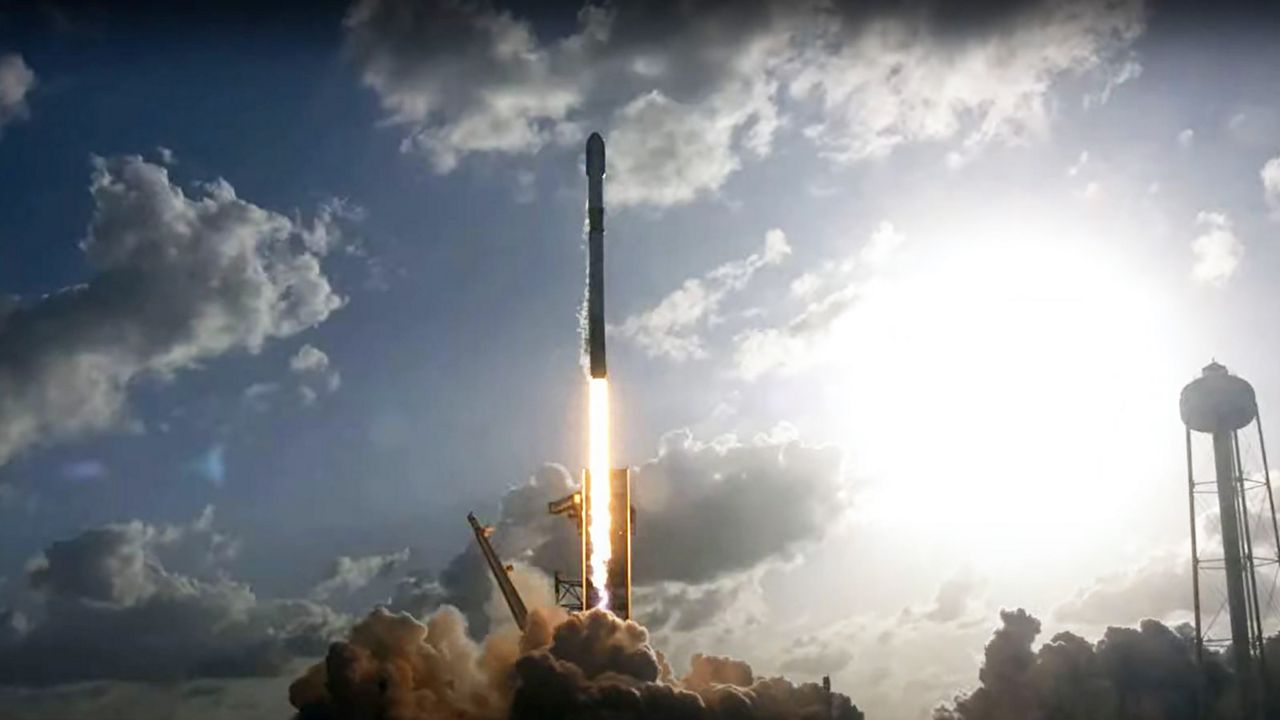KENNEDY SPACE CENTER, Fla. — SpaceX completed another launch on Saturday, marking the space company’s 15th launch this year from Florida.
What You Need To Know
- The launch took place at 6:54 p.m. Saturday
- Rocket is carrying satellites, radar
- Get more space coverage right here
The Falcon 9 booster B1058 is carrying more than just Starlink satellites up into orbit. Joining the 52 satellites owned by SpaceX is a Capella Synthetic Aperture Radar (SAR) satellite and Tyvak-0130.
Along for the ride
Capella Space was founded in 2016 in order to “enable a richer understanding of our planet in entirely new and powerful ways,” according to its website.
“When Malaysian flight MH370 went missing, the world’s superpowers could not locate this plane with all of their assets. We thought that more could be done to monitor this one planet and home that we have,” said Payam Banazadeh, the CEO and founder of Capella Space.
Capella Space’s first launch was also aboard a SpaceX Falcon 9 rocket on Dec. 3, 2018. The company launched what it describes as the “first commercial U.S. SAR satellite” Capella-2 in 2020.
The company said its goal is to “launch several satellites in 2021 and beyond” with the goal of “delivering world-class SAR needed for reliable information and better decision making.
The other entity flying aboard the Falcon 9 on Saturday is the National Oceanic Atmospheric Administration (NOAA) via the company Tyvak Nano-Satellite Systems Inc., a subsidiary of Terran Orbital Corporation.
According to a public summary released by NOAA, the Tyvak-0130 is a “private, space-based, remote sensing system,” which functions as “an optical spectrum astronomy observation satellite.”
A busy month for SpaceX
Including launching Crew-2 to the International Space Station on April 23, SpaceX has conducted three launches of exclusively Starlink satellites. Each of the launches on April 28, May 4, and May 9, carried 60 Starlink satellites.
Currently a beta version of the satellite internet service is functioning here in the U.S. along with Canada, the United Kingdom, New Zealand and Germany. Earlier this month, the company announced it would be expanding into both Austria and France.
More specifics about Saturday's launch
The company’s Falcon 9 rocket was set to lift off from Launch Complex 39A at the Kennedy Space Center with the launch window at 6:56 p.m. (it was moved back 2 minutes, from 6:54 p.m., shortly before launch).
SpaceX had scheduled a backup date of Sunday, 6:33 p.m. ET.
Onboard is a Capella Synthetic Aperture Radar satellite and Tyvak-0130 (an optical-spectrum astronomy observation satellite), which will keep the 52 Starlink satellites company.
After the stage separation, SpaceX’s droneship “Of Course I Still Love You” — stationed in the Atlantic Ocean — will be the landing platform for the Falcon 9’s first stage, stated the company.
And that first-stage booster has already seen some action, as it sent NASA astronauts Bob Behnken and Dough Hurley to the International Space Station nearly a year ago on May 30, during the SpaceX Demo-2 mission.
It was the first time U.S. astronauts were sent to space on American soil since the retirement of the space shuttle program in 2011.
Since then the booster, called B1058, has been six other times, including three Starlink launches, along with the launches for the payloads of ANASIS-II, CRS-21 and Transporter-1.
One half was previously used during the SXM-7 mission and the other supported the NROL-108 mission for the National Reconnaissance Office.



